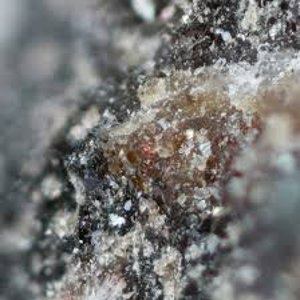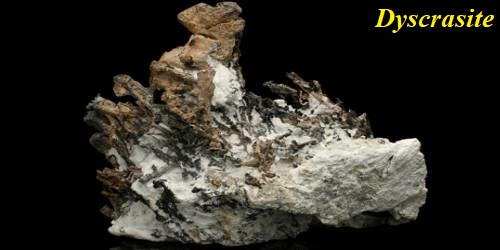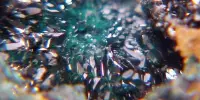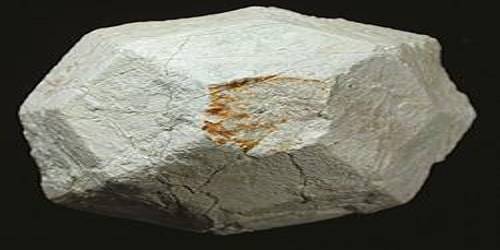Hiärneite is an oxide mineral named after the Swedish geologist Urban Hiärne (1641-1727). It is an oxide mineral containing antimony and zirconium. The mineral can be found in rocks that mainly consists of fine-grained phlogopite. Hiärneite is the first known mineral that contains both of the chemical elements antimony and zirconium.
The mineral was described in 1997 for its occurrence in a skarn environment in Långban iron–manganese deposit of the Filipstad district, Värmland, Sweden.
General Information
- Category: Oxide mineral
- Formula: (Ca,Mn,Na)2(Zr,Mn3+)5(Sb,Ti,Fe)2O16
- Crystal system: Tetragonal
- Crystal class: Ditetragonal dipyramidal (4/mmm)

Fig: Hiärneite
Properties
- Color: Red
- Crystal habit: Prismatic, subhedral
- Cleavage: None
- Mohs scale hardness: 7
- Diaphaneity: Translucent
- Specific gravity: 5.44
- Optical properties: Uniaxial (+)
Occurrence
Hiärneite is a new Sb-bearing mineral isostructural with calzirtite. It occurs in a skarn mineral assemblage, coexisting with phlogopite, calcite, arsenatian fluorapatite, svabite, jacobsite, magnetoplumbite, titanian bindheimite, and pyrophanite, from the Långban deposit, Filipstad, Sweden.
Information Source:
















